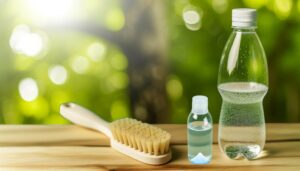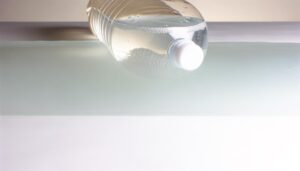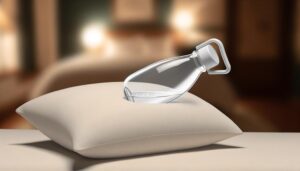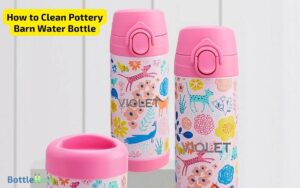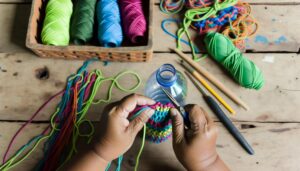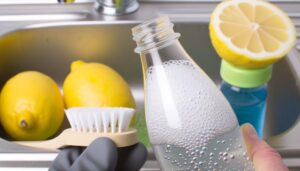Diy Water Bottle Pump: Easy Guide!
Creating a DIY water bottle pump is straightforward with the right materials and tools.
You’ll achieve a cost-effective and customizable water dispenser, and there’s more to learn about optimizing your setup.
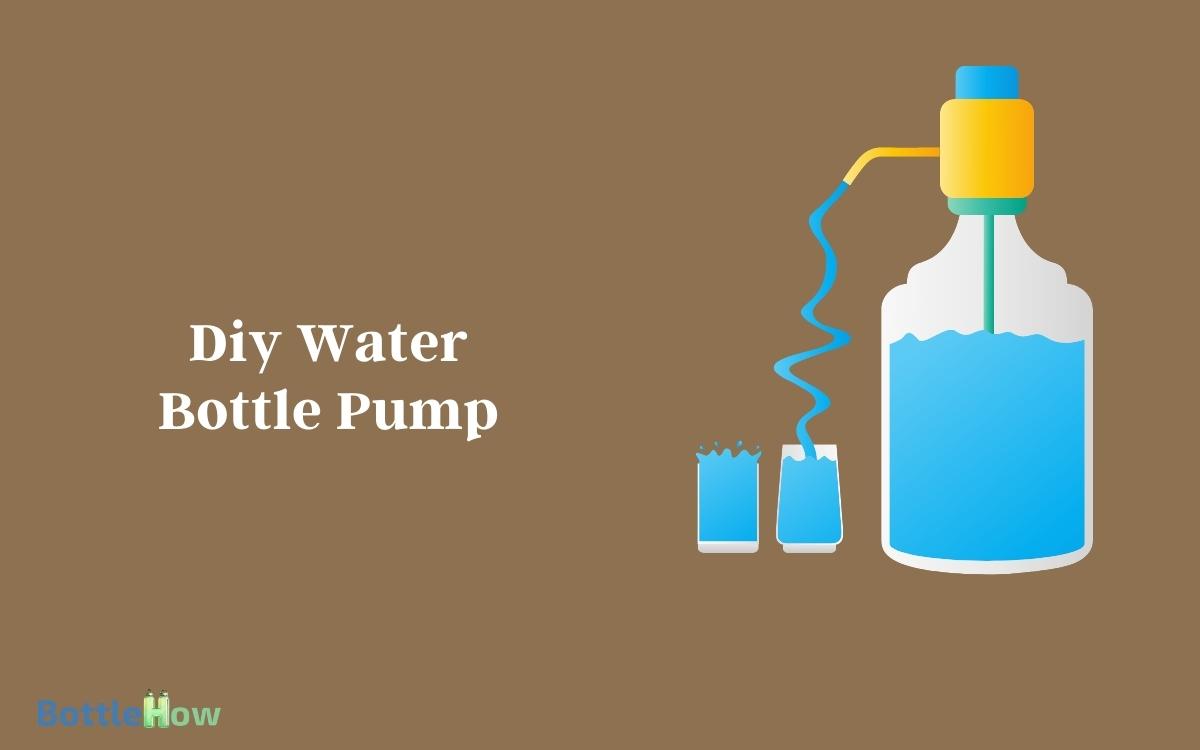
Key Takeaways
Materials Needed
To create your DIY water bottle pump, you’ll need a precise list of materials to guarantee proper functionality and ease of assembly.
- Clean, sturdy water bottle with screw cap
- Small submersible pump (compatible with bottle size)
- Flexible tubing (fits pump outlet and bottle opening)
- One-way check valve
- Rubber grommet
- Silicone sealant
- Zip ties or clamps
With these materials, your project will be set for a smooth build.
Tools Required
You’ll need a few essential tools to guarantee a smooth assembly of your DIY water bottle pump. Here’s a detailed table outlining the required tools:
| Tool | Purpose | Expert Tip |
|---|---|---|
| Utility Knife | Precise cutting of plastic components | Use a fresh blade for clean cuts |
| Drill | Creating holes | Start with a small bit for accuracy |
| Hot Glue Gun | Sealing and securing components | Preheat fully for better adhesion |
| Screwdriver | Fastening screws | Magnetic tips help hold screws |
| Pliers | Gripping and bending | Opt for needle-nose for precision |
Make sure you have these tools ready before you start.
Preparing the Bottle
Frequently, the first step in preparing the bottle involves thoroughly cleaning it to guarantee no contaminants affect the pump’s performance. Begin by rinsing the bottle with warm water, then use a mild detergent to scrub the interior.
Employ a bottle brush to reach all surfaces, making sure all residue is removed. Rinse thoroughly to eliminate any soap traces.
For added sanitation, fill the bottle with a solution of one part vinegar to three parts water, letting it sit for 10 minutes before a final rinse.
Dry the bottle completely using a clean, lint-free cloth or allow it to air dry in a hygienic environment.
Make certain the bottle’s cap and neck are also cleaned, as these areas can harbor bacteria.
Assembling the Pump
First, gather all necessary materials, including tubing, a manual pump, and connectors.
Next, securely connect the pump components, ensuring airtight seals to prevent leaks.
Gather Necessary Materials
Securing the necessary materials is crucial for successfully assembling your DIY water bottle pump.
You’ll need a few key items:
- A clean, empty water bottle
- A small electric pump
- Flexible tubing
- A one-way valve
- A power source
Verify that the pump’s voltage matches the power supply to avoid damage. Select flexible tubing that fits snugly on both the pump and the bottle’s opening. Opt for a one-way valve to prevent backflow, guaranteeing efficient water dispensing.
Additionally, a hot glue gun or waterproof adhesive is necessary to secure connections and prevent leaks.
Having a pair of scissors and a ruler will help you measure and cut tubing accurately. Collecting these materials beforehand will streamline the assembly process.
Connect Pump Components
With all materials at hand, start by attaching the flexible tubing securely to the outlet of the small electric pump. Guarantee the tubing fits snugly to prevent any leaks.
Next, connect the other end of the tubing to the inlet of your one-way valve, making sure the arrow on the valve points away from the pump. This guarantees proper flow direction. Use hose clamps at each connection point for added security.
Then, mount the pump to your water bottle cap by drilling a small hole and inserting a waterproof grommet. Feed the tubing through the grommet, making sure it’s airtight.
Secure the pump onto the bottle cap using epoxy adhesive for a firm hold. Allow the adhesive to cure fully before proceeding.
Test Pump Functionality
To verify everything is functioning correctly, power the electric pump and observe the water flow through the tubing and one-way valve.
Confirm there’s a steady, uninterrupted flow. If you notice any leaks or irregularities, double-check the connections and secure any loose fittings.
| Checklist | Details |
|---|---|
| Power the Pump | Switch on the electric pump. |
| Observe Water Flow | Check for a steady stream. |
| Inspect for Leaks | Look for any drips or loose fittings. |
| Adjust Connections | Tighten any loose components. |
Expert tip: Use Teflon tape on threaded connections to ensure a tight seal. This helps prevent leaks and maintains consistent pressure. If the water flow seems weak, verify that the pump has adequate power and the tubing isn’t kinked or obstructed.
Securing the Tubing
To secure the tubing, first, make sure you choose the proper type that fits snugly with your pump and bottle.
Use clamps to stabilize the connection points, preventing any movement that could cause disconnections.
Choosing Proper Tubing
Securing the tubing is crucial to prevent leaks and maintain efficient water flow in your DIY water bottle pump.
Follow these steps to choose and secure the proper tubing effectively:
- Measure Diameter: Select tubing with an internal diameter that matches your pump nozzle and bottle opening. Too loose, and it will leak; too tight, and it may be difficult to fit.
- Select Material: Opt for food-grade silicone or PVC tubing to guarantee safety and durability. Avoid materials that could deteriorate or contaminate your water.
- Cut to Length: Use a sharp blade to cut the tubing to your required length. Ensure clean, straight cuts to avoid potential leaks and ensure a snug fit.
Clamping for Stability
When securing the tubing, it’s important to use appropriate clamps to maintain stability and prevent any potential leaks. Begin by selecting stainless steel hose clamps, as they offer superior durability.
Fit the clamp around the tubing at the connection point, making sure it sits evenly. Use a screwdriver to tighten the clamp, but avoid over-tightening to prevent damaging the tubing.
Position additional clamps at intervals along the tubing to provide extra support. For best results, space these clamps approximately 6 inches apart. This prevents the tubing from shifting under pressure.
Always double-check that each clamp is secure and the tubing remains straight. By following these steps, you’ll ensure the stability and longevity of your DIY water bottle pump.
Preventing Leaks Effectively
Prevent leaks by applying Teflon tape to all threaded connections before securing the tubing with clamps. This guarantees a tight seal.
Follow these steps to prevent leaks effectively:
Wrap Teflon Tape:Wrap the tape clockwise around each threaded connection three to five times. This fills gaps and enhances the seal.
Attach Tubing: Push the tubing firmly onto the connector. Make sure it’s fully seated to avoid weak spots.
Secure with Clamps: Use stainless steel hose clamps to secure the tubing. Tighten them with a screwdriver, guaranteeing even pressure without over-tightening.
Testing the Pump
Carefully attach the pump to the water bottle, making sure all connections are secure to achieve peak performance and prevent leaks. Once connected, firmly press the pump handle to test the pressure.
Observe if the water flows smoothly from the spout. If the flow is inconsistent, check for air pockets by gently tilting the bottle side to side.
Next, measure the output rate by timing how long it takes to fill a standard cup. Consistent flow indicates ideal functionality. If the pump hesitates, recheck all seals and connections. Ensure there are no obstructions in the tubing.
For best results, keep the bottle upright and avoid over-tightening the pump to prevent stress on the components. Your pump should now operate effectively.
Troubleshooting Tips
If you encounter any issues during testing, follow these troubleshooting tips to make sure your DIY water bottle pump operates efficiently.
Check for Leaks: Inspect all connections and seals. Even a small leak can reduce pump performance. Tighten any loose fittings and apply waterproof tape if necessary.
Ensure Proper Priming: Make sure the pump is fully primed. Without enough water in the system, the pump won’t function correctly. Fill the pump and tubing with water before operation.
Evaluate Power Source: Verify that the power source (battery or electrical) is providing adequate voltage. A weak power supply can cause the pump to run sluggishly. Use a multimeter to check voltage levels and replace batteries if needed.
Benefits of DIY Pump
Crafting your own DIY water bottle pump offers numerous advantages, including cost savings, customization options, and the ability to troubleshoot and repair it yourself. With a little creativity, you can even modify your DIY water bottle pump for other uses, such as a DIY water bottle irrigation system for your garden. This approach allows you to control water flow efficiently, ensuring your plants receive the right amount of hydration. Plus, repurposing materials for such projects promotes sustainability and reduces waste.
By building it, you can select materials that fit your specific needs, ensuring peak efficiency and longevity.
You’ll save money on expensive commercial pumps, often marked up for profit. Plus, you can tailor the pump’s design to your exact requirements, whether that means adjusting the flow rate or integrating additional features like a filtration system.
When issues arise, you won’t need to rely on external support. Familiarity with each component enables quick, effective troubleshooting and repairs.
Investing time in understanding the mechanics empowers you to maintain and upgrade your pump, ensuring it remains functional and efficient for years.
Conclusion
You’ve now mastered the art of creating a DIY water bottle pump, turning simple materials into a functional device.
Remember, the key to success is precision—like a watchmaker crafting a timepiece. Secure every connection and test thoroughly. Troubleshoot any issues with patience.
Enjoy the benefits of your ingenuity, from cost savings to customization. With these skills, you’re not just a hobbyist; you’re an innovator.
Happy pumping!

